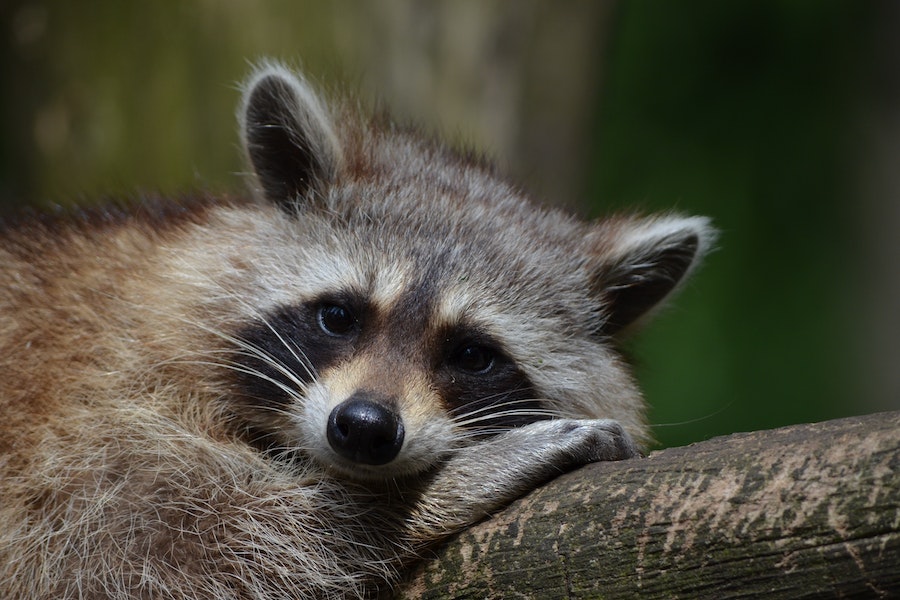Raccoons, those charming and curious creatures, have long fascinated nature enthusiasts and urban dwellers alike. As these intelligent mammals roam through forests and city neighborhoods, their vocalizations are crucial in their communication and interactions. Understanding what a raccoon sounds like allows us to appreciate the intricacies of its behavior but also helps us coexist harmoniously with these adaptable creatures. In this article, we will delve into the diverse vocal repertoire of raccoons, decoding their sounds and exploring the various contexts in which they communicate. Whether you encounter them in the wild or the cityscape, learning about raccoon vocalizations promises to shed light on their captivating world.
What Does A Raccoon Sound Like?
A raccoon’s vocalizations are diverse and intriguing to hear. They emit various sounds, from chittering and purring when content to growling and hissing when feeling threatened or aggressive. Whimpering and whining are common during interactions between raccoon family members, while squealing and screeching may be heard during mating or territorial disputes. If you ever encounter these curious creatures in the wild or around your home, listen closely, and you might catch a glimpse into the fascinating world of raccoon communication.
Behavioral Patterns And Habits Of Raccoons
Raccoons are highly adaptive and intelligent creatures, exhibiting various behavioral patterns and habits that help them survive in diverse environments. Some of their notable behaviors and habits include:
Nocturnal Activity: Raccoons are primarily nocturnal, meaning they are most active at night. They have excellent night vision, which allows them to forage for food and explore their surroundings under the cover of darkness.
Omnivorous Diet: Raccoons are opportunistic feeders with an omnivorous diet. They consume various food items, including fruits, vegetables, insects, small animals, bird eggs, and scavenged human food. Their adaptable diet contributes to their successful survival in various habitats.
Dexterity and Hand-Eye Coordination: Raccoons have remarkably dexterous front paws that function almost like human hands. This ability allows them to manipulate objects, open containers, and even unlatch simple locks, making them excellent foragers and scavengers.
Wash-Like Behavior: One of the most iconic behaviors of raccoons is their “washing” behavior. When near water sources, they frequently dip their food items into the water before eating them. This behavior, though initially believed to be an attempt to wash food, is more likely a result of their heightened tactile sensitivity.
Home Range and Territory: Raccoons are not territorial animals, but they do have home ranges that they defend. They are relatively solitary creatures, except during the breeding season and when mothers raise their young.
Arboreal Abilities: Raccoons are skilled climbers and are equally at home in trees as they are on the ground. They use their climbing abilities both to find food and to escape from predators.
Nesting and Dens: Raccoons create nests or dens in various locations, such as tree hollows, caves, abandoned buildings, and even attics of homes. They use these dens for shelter, resting, and raising their young (kits).
Curiosity and Problem-Solving: Raccoons are known for their inquisitiveness and problem-solving abilities. They can figure out complex challenges, especially when obtaining food, leading to their reputation as “masked bandits.”
Familiar Vocal Sounds And Their Meanings
Raccoons use a variety of vocal sounds to communicate with each other and convey different messages. Here are some familiar vocal sounds produced by raccoons and their possible meanings:
Chittering and Purring:
Chittering sounds are soft and high-pitched vocalizations often associated with contentment or excitement. When raccoons are relaxed or interacting with familiar individuals, they may produce these sounds along with purring, which indicates a sense of comfort or happiness.
Growling and Hissing:
Growls and hisses are defensive and aggressive vocalizations. Raccoons may growl and hiss when they feel threatened or cornered, serving as a warning to potential predators or rivals to back off.
Whimpering and Whining:
These sounds are commonly heard during interactions within raccoon family groups, particularly between mother raccoons and their offspring. Whimpering and whining typically signify communication between the mother and her young, often to provide reassurance or to request attention.
Squealing and Screeching:
Squeals and screeches are loud and high-pitched vocalizations during mating or territorial disputes between raccoons. These sounds can be intense and aggressive as they express dominance or competition over resources and mates.
Cooing:
Female raccoons often use a soft, repetitive cooing sound during courtship and mating interactions. This vocalization is part of their communication during the breeding season.
Communication Contexts Of Raccoon Sound Like
Raccoons use vocalizations and body language to communicate in various contexts, indicating their emotions, intentions, and social interactions. Some of the critical communication contexts include:
Raccoon mothers and their young communicate through vocalizations and physical gestures. Mothers produce soft chittering, and purring sounds to soothe and comfort their kits, while the young raccoons may whimper or whine to express their needs or seek attention.
During the breeding season, male and female raccoons communicate through vocalizations and body postures as part of their courtship ritual. Female raccoons may emit gentle cooing sounds to indicate their receptiveness to mating, while males produce vocalizations to express their interest and readiness to mate.
Raccoons are territorial animals, and disputes over resources or mating rights can lead to aggressive encounters. In such situations, raccoons may growl, hiss, squeal, or screech to assert dominance and protect their territory.
When raccoons feel threatened or cornered, they use vocalizations like growls, hisses, and other aggressive sounds to warn potential predators or rivals to keep their distance. This defensive behavior aims to avoid confrontations and maintain personal safety.
Raccoons may produce soft vocalizations or use body postures to communicate while foraging for food in groups. They might indicate food sources or share their findings with other raccoons to facilitate cooperative feeding.
Raccoons are social animals, especially when young, and engage in play behaviors for social bonding and learning. Playful vocalizations, along with various physical interactions, help strengthen social connections among raccoons.
In urban environments, raccoons may interact with humans and convey their feelings through various vocalizations. For example, they might express distress or discomfort when they feel threatened by human presence or react with curiosity when exploring novel environments.
Comparing Raccoon Sounds To Other Animals
Raccoon sounds can sometimes be mistaken for those of other nocturnal animals, especially in environments where multiple wildlife species coexist. Here are some comparisons between raccoon sounds and those of other animals:
Raccoon Chittering vs. Bird Chirping:
The chittering sounds made by raccoons can resemble the chirping of small birds. However, raccoon chittering tends to have a slightly more guttural and rhythmic quality, while bird chirps are typically more melodious and varied in pitch.
Raccoon Growling vs. Canine Growling:
Raccoon growls may sound similar to those of certain small canine species, such as foxes or small dogs. However, raccoon growls often have a distinct nasal or throaty quality, which sets them apart from the more throaty and deeper growls of canines.
Raccoon Hissing vs. Cat Hissing:
Raccoon hissing and cat hissing can be quite similar in sound. Both exhibit sharp and prolonged sounds designed to intimidate or warn. However, raccoon hisses may have a slightly rougher texture compared to the smoother hisses of cats.
Raccoon Whimpering vs. Crying Baby:
The whimpering sounds of raccoons, particularly the young kits, might resemble the cries of human babies. Both convey distress and a need for attention, but raccoon whimpering tends to have a more nasal and higher-pitched tone than human infant cries.
Raccoon Squealing vs. Rodent Chattering:
Raccoon squeals can sometimes be mistaken for chattering sounds made by small rodents like squirrels. However, raccoon squeals are louder and more high-pitched, often indicating distress or excitement.
Final Words
In conclusion, the vocalizations of raccoons provide a fascinating glimpse into their intricate world of communication. These intelligent and adaptable creatures use various sounds to express emotions and intentions, from contentment and bonding to warning and defense. Understanding raccoon sounds can enhance our appreciation for their behavior and social dynamics, whether we encounter them in the wild or urban settings. However, it is crucial to remember that raccoons are wild animals and should be respected from a distance. Observing them from afar and allowing them to thrive in their natural habitats is essential for their well-being and our safety. If ever in doubt about raccoon sounds or encounters, seeking guidance from wildlife experts can help foster a harmonious coexistence with these fascinating masked bandits.
FAQ’s
What sounds do raccoons make?
Raccoons produce a range of vocalizations, including chittering, purring, growling, hissing, whimpering, whining, squealing, and screeching. Each sound serves different communication purposes, from expressing contentment to warning of danger or asserting dominance.
Is raccoon sounds loud?
Raccoons can vary in volume depending on the context. Some vocalizations, like growls and screeches, can be loud and carry over long distances. Others, such as chittering or purring, are softer and more subtle.
Can raccoon sounds be mistaken for other animals?
Yes, raccoon sounds can sometimes be confused with those of other nocturnal animals. For example, chittering may resemble bird chirping, and hissing might be mistaken for cat hissing. However, paying attention to specific characteristics and context can help identify the source of the sound.

